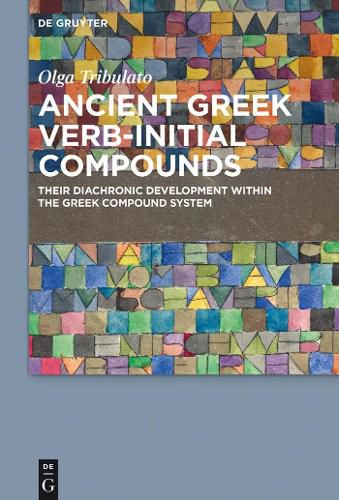Readings Newsletter
Become a Readings Member to make your shopping experience even easier.
Sign in or sign up for free!
You’re not far away from qualifying for FREE standard shipping within Australia
You’ve qualified for FREE standard shipping within Australia
The cart is loading…






This book provides a brand new treatment of Ancient Greek (AG) verb-first (V1) compounds. In AG, the very existence of this type is surprising: its left-oriented structure goes against the right-oriented structure of the compound system, in which there also exists a large class of verb-final (V2) compounds (many of which express the same agentive semantics). While past studies have privileged either the historical dimension or the assessment of semantic and stylistic issues over a systematic analysis of V1 compounds, this book provides a comprehensive corpus of appellative and onomastic forms, which are studied vis-a-vis V2 ones. The diachronic dimension (how these compounds developed from late PIE to AG and then within AG) is combined with the synchronic one (how they are used in specific contexts) in order to show that, far from being anomalous, V1 compounds fill lexical gaps that could not, for specified morphological and semantic reasons, be filled by more ‘regular’ V2 ones. Introductory chapters on compounding in morphological theory and in AG place the multi-faceted approach of this book in a modern perspective, highlighting the importance of AG for linguists debating the properties of the V1 type cross-linguistically.
$9.00 standard shipping within Australia
FREE standard shipping within Australia for orders over $100.00
Express & International shipping calculated at checkout
This book provides a brand new treatment of Ancient Greek (AG) verb-first (V1) compounds. In AG, the very existence of this type is surprising: its left-oriented structure goes against the right-oriented structure of the compound system, in which there also exists a large class of verb-final (V2) compounds (many of which express the same agentive semantics). While past studies have privileged either the historical dimension or the assessment of semantic and stylistic issues over a systematic analysis of V1 compounds, this book provides a comprehensive corpus of appellative and onomastic forms, which are studied vis-a-vis V2 ones. The diachronic dimension (how these compounds developed from late PIE to AG and then within AG) is combined with the synchronic one (how they are used in specific contexts) in order to show that, far from being anomalous, V1 compounds fill lexical gaps that could not, for specified morphological and semantic reasons, be filled by more ‘regular’ V2 ones. Introductory chapters on compounding in morphological theory and in AG place the multi-faceted approach of this book in a modern perspective, highlighting the importance of AG for linguists debating the properties of the V1 type cross-linguistically.